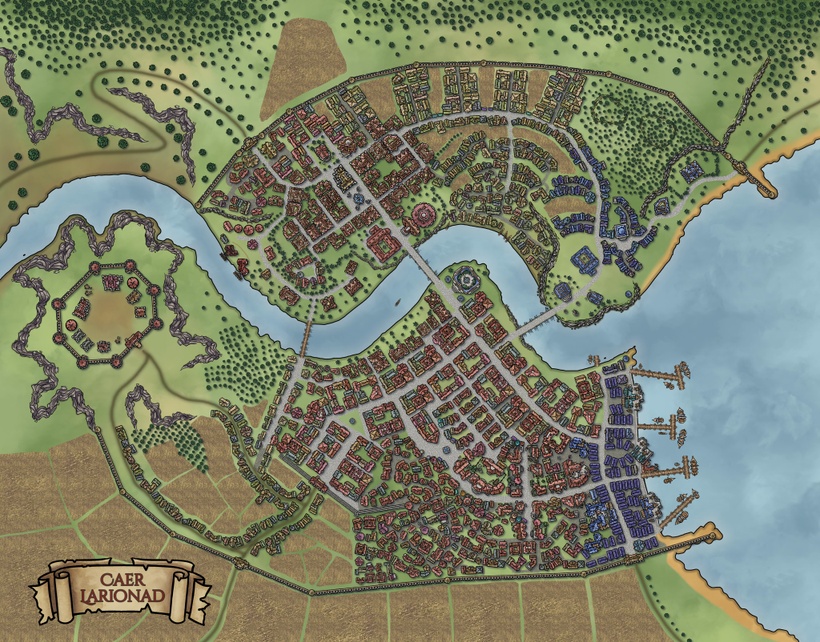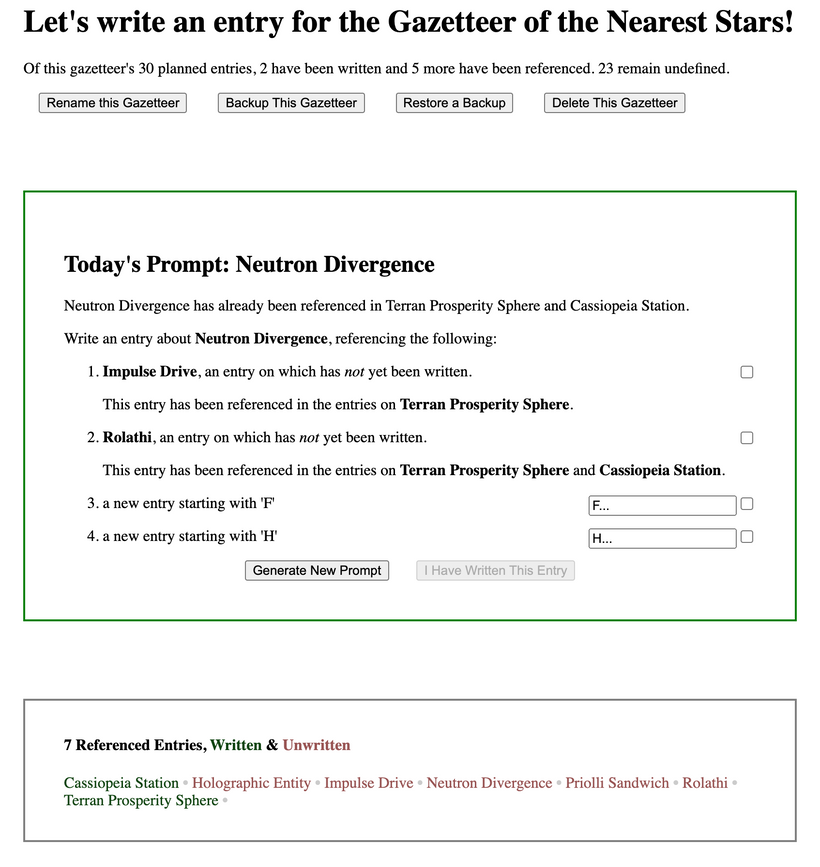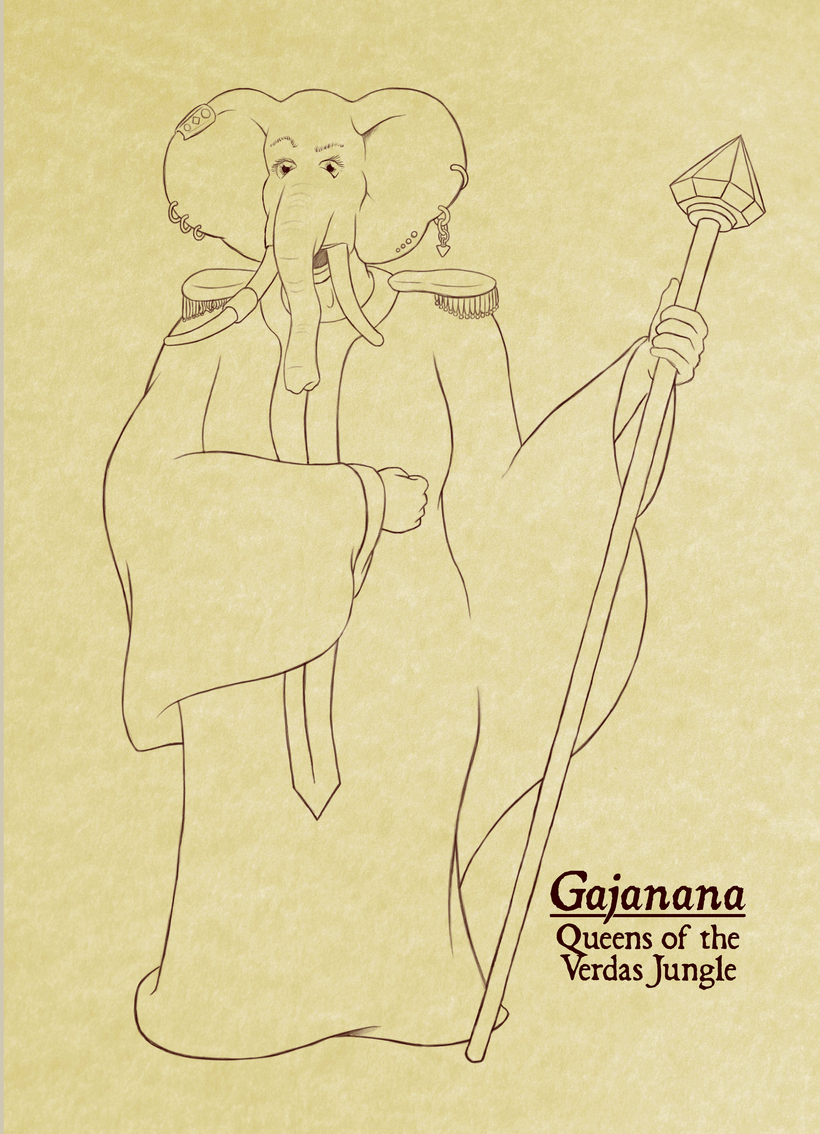Alright, let’s kick this off! Welcome to the inaugural post of the Gazetteer of the Speaking Lands! In this series I will be your guide through the gazetteer detailing the fantastic world of the Speaking Lands, its peoples, its geography, its politics, its ecology, its magic, its trade, and its adventures.
Each week I’ll be presenting a new entry from the gazetteer. This week, it’s Caer Larionad, the City at the Center of the World. What better place to start, right?
Each week’s entry will be followed by a poll in which you get to decide which entry we’ll see next week. There’s a poll here on patreon and one on my twitter. Patrons are welcome to vote twice; that’s the privilege of membership!
Without further ado, here’s our first entry…
—
Caer Larionad
The scholars of Larionad call their city the Center of the World, and there is some merit to the claim. The city’s prominence is due to its position at the juxtaposition of the southernmost tip of Loratha Forest, the northern edge of the Kharzan Mountains, and the furthest inlet of the Mergather Gulf.
For most of the peoples of the Speaking Lands, these geographic features are either all but impassable or an easy thoroughfare of traffic. Those who find these regions impassable circumnavigate their edges and find themselves travelling through Caer Larionad. Those who find the terrain easy to traverse find, at the end of their ease of travel, the trade hub that all others must pass through. Hence the city sits astride a number of trade routes and also acts as a entreport to otherwise inaccessible markets. No matter where one goes in the Speaking Lands, the locals have at least heard of Caer Larionad, if they do not trade directly with the city.
Like many cities, Caer Larionad’s population is cosmopolitain, with a mix of humans, satyrs, orks, renardi, and kobolds. The southern end of the city hosts Tusktown, a gajanana enclave, and a neighborhood with many sylvan residents known widely as the Elven Quarter. Despite (or because of) the city’s broad diversity of citizens, it has a long history of humans in positions of power, both as guildmasters and a few of its more recent Lord Mayors. There have long been whispers that this may be the genesis of a “human kingdom,” rumors which the mayor is always swift to quash.
The city claims dominion over the surrounding lands for about twenty leagues in all directions—a day’s ride, more or less—which mostly encompassses fields, woods, and small fishing villages. While much of the city’s government is inextricably bound to the guilds who operate within it, the Lord Mayor, the Captain of the Guard, and the Magistrate General are all elected by popular vote. Anyone who has maintained a home within the city walls for more than a year is counted a citizen. At the last election, the count crested a quarter million souls.
The titular caer itself sits atop a promontory above the port city, guarding the only two overland approaches and overlooking the gulf. The same commanding landscape has been used for fortresses for all of recorded history, and the present structure is a conglomeration of at least four different prior fortifications. Much of the current masonry was fashioned with reused material from prior walls, making the caer a swirl of colors and textures.
The fortress proved its mettle in the Ogrewar, in which the Caer broke the advance of the Rampage. In a feat of diplomacy, the city’s council of guilds and Lord Mayor managed to forge a coalition of neighboring and foreign peoples. The allied forces held the line long enough for operatives behind the lines to disable the Rampage from within. Once the threat was nullified, however, the coalition members were quick to return to their own homes, many of which had been devastated by the hostilities.
Throughout the rule of the Dread Tyrant, the city sent its tribute directly to Tour Toriel and was never under the authority of any of his lieutenants. Since the fall of the Tyrant, the city has been scrambling to maintain that independence, hiring mercenaries to bolster its defenses and sending out diplomats to strengthen local alliances.
The diplomatic position is delicate, since the two most likely allies, the elves of Loratha and the dwarves of Kharzan, have been bitter enemies since time immemorial. While both elves and dwarves assisted the city during the Ogrewar, they each claim a list of offenses by their rivals during the seige. Luckily both peoples harbor a long disdain for seafaring and prefer an independent Caer Larionad as a catspaw and buffer, if only so they don’t have to directly administer the port.

—
The wiki version of this entry, with links to other entries, is available here: http://joshroby.com/keystone/wiki/index.php?title=Caer_Larionad
—
You might recognize Caer Larionad as the home of the Fighter archetype from my Keystone playtest. The Gazetteer is a potential setting for playing Keystone. It’s a whole bunch of fun worldbuilding stuff that’s entertaining to explore but not necessary to play. All compiled, there’s about 56,000 words of the Gazetteer, and it’s destined to become a book on the Cortex Creator Studio. I’ll probably add some Cortex bits before it becomes a product there.
Until then, this is where Speaking Lands will be delivered, fresh to your digital doorstep. I do hope you enjoy; I had a blast writing all these entries and I’m really looking forward to sharing the fun!
—Josh

